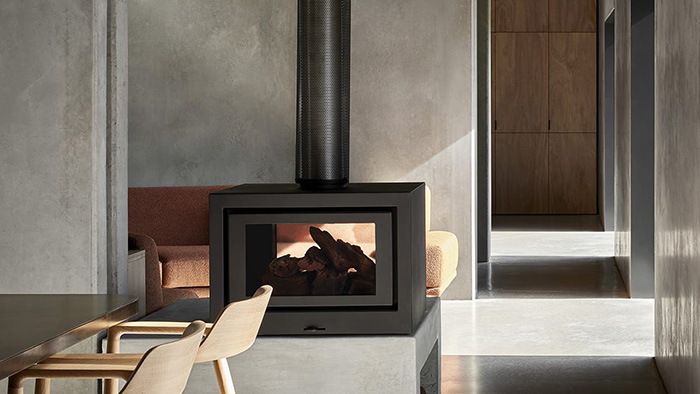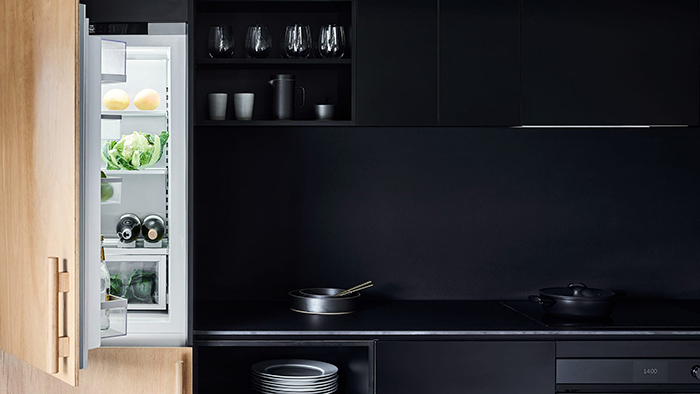A compact monolith

Sited on a north-facing ridge amid dense bushland, the house was conceived as a place of seclusion and security. Constructed using pre-cast concrete panels, its exterior is both deliberately monolithic and compact. Its northern elevation is broken up by large areas of glazing, which are able to completely retract, opening the interior to the landscape and valley below.
Shaping space

The interior of the long, narrow structure is divided into five separate nooks – two for sleeping, one for eating, another for living, and the last for bathing. The back wall of each nook sweeps around in a generous curve, encasing the occupant and directing the view outwards past the northern elevation.
Minimal and utilitarian

When the kitchen is in use, the timber doors retract to reveal a minimal workspace in black steel and ceramic, with complementary appliances. In selecting these pieces, the architect gravitated towards Fisher & Paykel for its design-led products, smart space-saving solutions, and streamlined aesthetic.
"Fisher & Paykel knew the idea was to create a minimal and calm space with nothing jarring, so they recommended products in line with that notion," she said.
Project details
Project: Erskine River House
Project Type: Residential New Build
Location: Victoria, Australia
Architect: Kerstin Thompson Architects
Photographer: Sharyn Cairns

